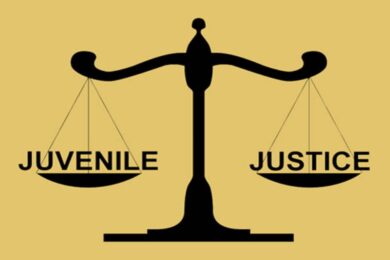
Introduction
The Indian legal system has long been burdened with delays, backlogs, and procedural complexities. With over 5 crore cases pending across various courts, there is an urgent need for mechanisms that offer speedy, cost-effective, and amicable resolution of disputes. This is where Alternative Dispute Resolution (ADR) comes in.
ADR refers to methods of resolving disputes outside the formal judicial system, such as arbitration, mediation, conciliation, negotiation, and Lok Adalats. These processes are less adversarial, more flexible, and often lead to mutually satisfactory outcomes. In India, ADR has gained significant recognition and is now embedded in various statutory frameworks and judicial practices.
1. What is Alternative Dispute Resolution (ADR)?
Alternative Dispute Resolution (ADR) is a non-judicial mechanism that allows parties to resolve disputes without going through the formal court process. ADR is based on the principles of negotiation, cooperation, and voluntary participation, which help reduce litigation costs, preserve relationships, and ensure quicker results.
2. Types of ADR Mechanisms in India
a. Arbitration
Arbitration is a quasi-judicial process where the dispute is referred to an independent arbitrator chosen by the parties.
The decision, known as an arbitral award, is binding and enforceable in court under the Arbitration and Conciliation Act, 1996.
Widely used in commercial disputes, especially in construction, shipping, and corporate matters.
Can be ad hoc (as per party agreement) or institutional (through arbitral institutions like Indian Council of Arbitration or NCLT).
b. Conciliation
Similar to mediation but the conciliator plays a more active role in proposing solutions.
It is voluntary, non-binding, and flexible.
Commonly used in industrial disputes, governed under the Industrial Disputes Act, 1947.
c. Mediation
A neutral third party (mediator) facilitates negotiation between parties to reach a mutually acceptable solution.
It is voluntary and non-binding unless recorded in writing and agreed upon.
Increasingly promoted in family disputes, civil cases, and business disagreements.
India introduced the Mediation Act, 2023, which formalizes mediation practices across the country.
d. Negotiation
An informal process where parties resolve disputes themselves without third-party intervention.
Most flexible and cost-effective form of ADR.
Often used as a pre-litigation or pre-contractual remedy.
e. Lok Adalats
Established under the Legal Services Authorities Act, 1987.
Conducted by statutory bodies to resolve pending court cases or pre-litigation matters.
Awards are binding and final, with no provision for appeal.
Particularly effective for motor accident claims, bank recovery cases, utility bill disputes, etc.
3. Legal Framework Supporting ADR in India
a. Constitution of India
Article 39-A emphasizes equal justice and free legal aid, paving the way for accessible dispute resolution like Lok Adalats.
b. Civil Procedure Code (CPC), 1908
Section 89 CPC mandates courts to refer suitable civil disputes to ADR mechanisms.
c. Arbitration and Conciliation Act, 1996
Based on the UNCITRAL Model Law.
Updated through 2015, 2019, and 2021 amendments to streamline and modernize arbitration in India.
d. Legal Services Authorities Act, 1987
Establishes Lok Adalats and Permanent Lok Adalats to facilitate informal resolution of disputes.
e. Mediation Act, 2023
Establishes institutional mediation, mediator accreditation, and mediation councils.
Makes pre-litigation mediation mandatory in commercial and civil cases (with exceptions).
4. Advantages of ADR
✅ Faster Resolution: Disputes resolved in months or even weeks.
✅ Cost-Effective: Saves on court fees, legal costs, and expert fees.
✅ Confidentiality: Proceedings are private, unlike open court trials.
✅ Preserves Relationships: Especially useful in family or partnership disputes.
✅ Party Autonomy: Parties have greater control over procedure and outcomes.
✅ Reduced Court Burden: Helps decongest courts and enhance judicial efficiency.
5. ADR in Commercial Disputes
The Commercial Courts Act, 2015 mandates pre-institution mediation for commercial disputes.
International arbitration is recognized under the New York Convention and Geneva Convention.
India aims to become an international arbitration hub, with centers like the Mumbai Centre for International Arbitration (MCIA).
6. ADR in Family and Matrimonial Matters
Mediation is encouraged in divorce, child custody, maintenance, and domestic violence cases.
Family courts often refer parties to mediation before proceeding with litigation.
7. Lok Adalats and Grassroots Justice
Lok Adalats have resolved millions of disputes, particularly in rural and semi-urban India.
National Lok Adalat is held across India multiple times a year to dispose of large volumes of pending cases.
8. Challenges Facing ADR in India
a. Lack of Awareness
Many people are unaware of ADR options and benefits, especially in rural areas.
b. Inadequate Infrastructure
Need for more mediation centers, trained arbitrators, and digital platforms.
c. Enforcement Issues
While arbitral awards are binding, enforcement may face delays or resistance.
d. Quality of Mediators/Arbitrators
Lack of proper training, accreditation, and experience in some cases.
e. Resistance from Lawyers and Litigants
Some legal professionals and parties prefer litigation due to established familiarity or belief in stronger enforcement.
9. Recent Developments and Reforms
Mediation Act, 2023: Introduced a legal foundation for institutional mediation.
Online Dispute Resolution (ODR): Growing use of digital tools for virtual mediation/arbitration (especially post-COVID-19).
Arbitration Council of India (ACI): Proposed to regulate arbitrators and arbitral institutions.
Permanent Lok Adalats: Gaining ground for public utility disputes (transport, postal, telecommunication).
10. The Way Forward
To fully harness the potential of ADR in India:
📌 Increase public awareness through legal literacy campaigns.
📌 Institutionalize training and certification of ADR professionals.
📌 Ensure proper enforcement of ADR outcomes.
📌 Leverage technology to promote Online Dispute Resolution.
📌 Strengthen legal aid and support mechanisms, especially for marginalized groups.
Conclusion
ADR is no longer an “alternative” but a necessary supplement to the Indian justice system. As the courts continue to be overburdened, ADR provides a viable pathway toward speedy, efficient, and amicable resolution of disputes. With legal backing, institutional support, and growing public confidence, ADR mechanisms can lead India toward a more inclusive and accessible justice system. For India’s legal future to be brighter, ADR must evolve as both a parallel and complementary pillar to the formal judiciary.








No Comments